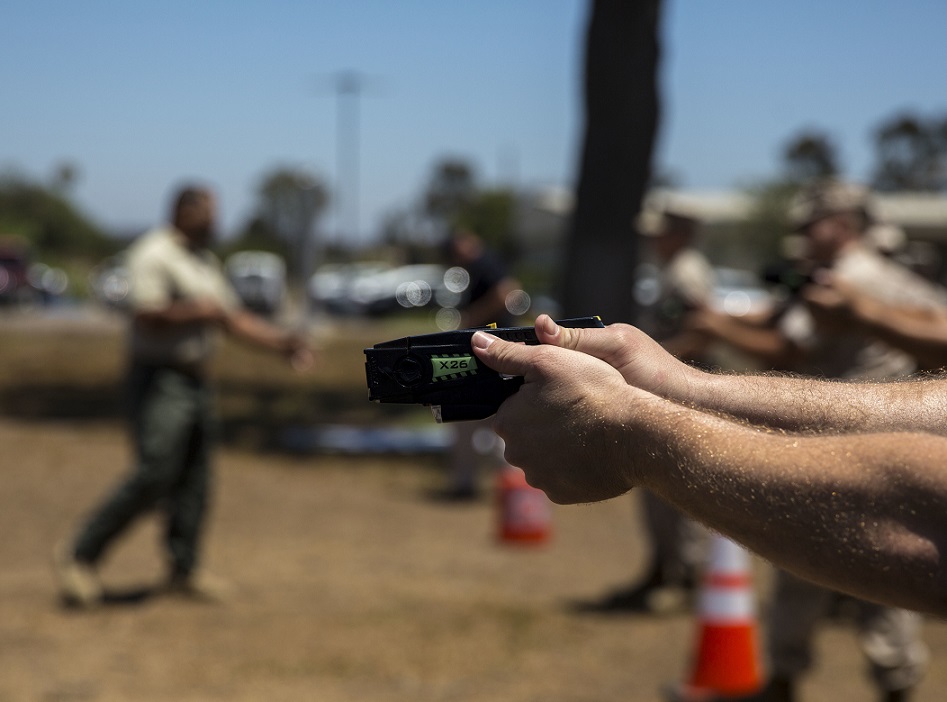This post is also available in:
 עברית (Hebrew)
עברית (Hebrew)
A revolutionary wireless electroshock weapon is in the process of issue by the US Patent Office. The device is defined as a non-lethal weapon typically utilized by law enforcement personnel to control noncompliant and aggressive subjects. As designed, the electroshock weapon would fire a wireless direct contact projectile from a launcher to administer the shock to the subject.
The launcher is controlled by radio frequency. In addition to reducing the projectile velocity at launch and allowing the officer to control the shock wirelessly through radio frequency, the wirelessly controlled electronic weapon is designed to be compact, easy to carry, and provide improved accuracy.
Digital Ally, which develops, manufactures and markets video surveillance products for law enforcement, homeland security and commercial applications, plans to enter the nonlethal weapon market.
“With the innovation embodied in the new ‘259 Patent, we believe that we have addressed the limitations in current CEWs with our new technology and expect that it will become the platform for the next generation of CEWs that police have been long awaiting,” said Stan Ross, CEO of Digital Ally.
The weapon combines the advantages of conventional conducted electroshock weapons (CEWs) and long-range electroshock weapons without the wires and safety threat limitations the current technology poses to the subject. The technology represents a significant advancement to current CEW technology, which is many years old.
In the conventional non-lethal weapon market, there are three types of electroshock weapons. First, there are direct contact CEWs, which can only administer the shock while in contact with the subject and must be in arm’s reach of the subject. Second, there are CEWs that fire projectiles that administer the shock via thin wires. The shock from a CEW is limited to the length of the wire and limited to one charge. Finally, there are long-range CEWs.
“Recognizing the current limitations with electroshock weapon technology available to law enforcement, we saw potential to grow our product mix by addressing the estimated $8.5 billion global non-lethal weapons market and over 8,000 agencies currently deploying our digital video imaging and storage technology,” continued Ross. “We are now proceeding to develop our product prototype,” he concluded.


























